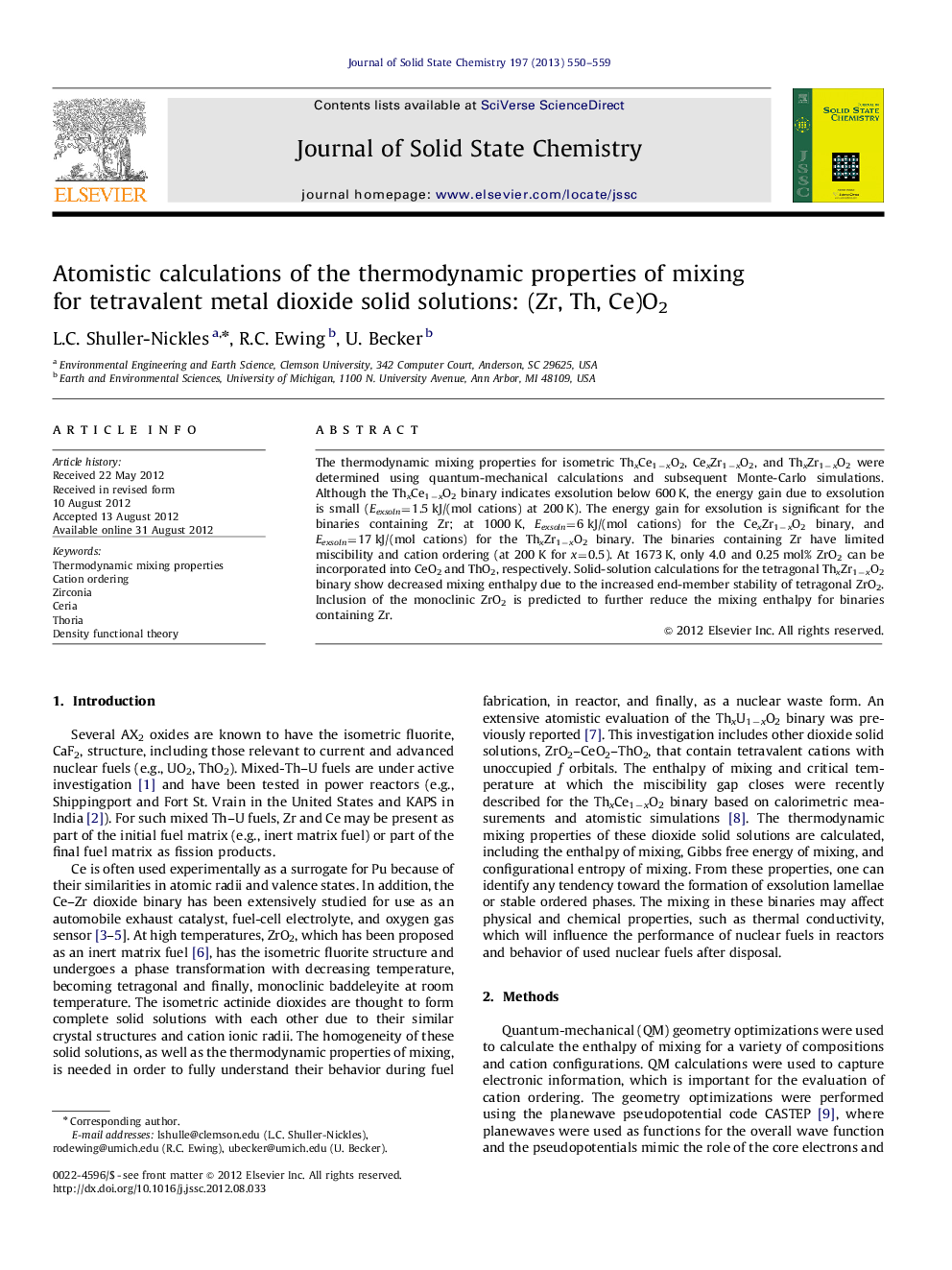| Article ID | Journal | Published Year | Pages | File Type |
|---|---|---|---|---|
| 1330143 | Journal of Solid State Chemistry | 2013 | 10 Pages |
The thermodynamic mixing properties for isometric ThxCe1−xO2, CexZr1−xO2, and ThxZr1−xO2 were determined using quantum-mechanical calculations and subsequent Monte-Carlo simulations. Although the ThxCe1−xO2 binary indicates exsolution below 600 K, the energy gain due to exsolution is small (Eexsoln=1.5 kJ/(mol cations) at 200 K). The energy gain for exsolution is significant for the binaries containing Zr; at 1000 K, Eexsoln=6 kJ/(mol cations) for the CexZr1−xO2 binary, and Eexsoln=17 kJ/(mol cations) for the ThxZr1−xO2 binary. The binaries containing Zr have limited miscibility and cation ordering (at 200 K for x=0.5). At 1673 K, only 4.0 and 0.25 mol% ZrO2 can be incorporated into CeO2 and ThO2, respectively. Solid-solution calculations for the tetragonal ThxZr1−xO2 binary show decreased mixing enthalpy due to the increased end-member stability of tetragonal ZrO2. Inclusion of the monoclinic ZrO2 is predicted to further reduce the mixing enthalpy for binaries containing Zr.
Graphical abstractTemperature-composition phase diagram showing miscibility gaps for the isometric ThxCe1−xO2, isometric CexZr1−xO2, isometric ThxZr1−xO2, and tetragonal ThxZr1−xO2 binaries at low composition (0
